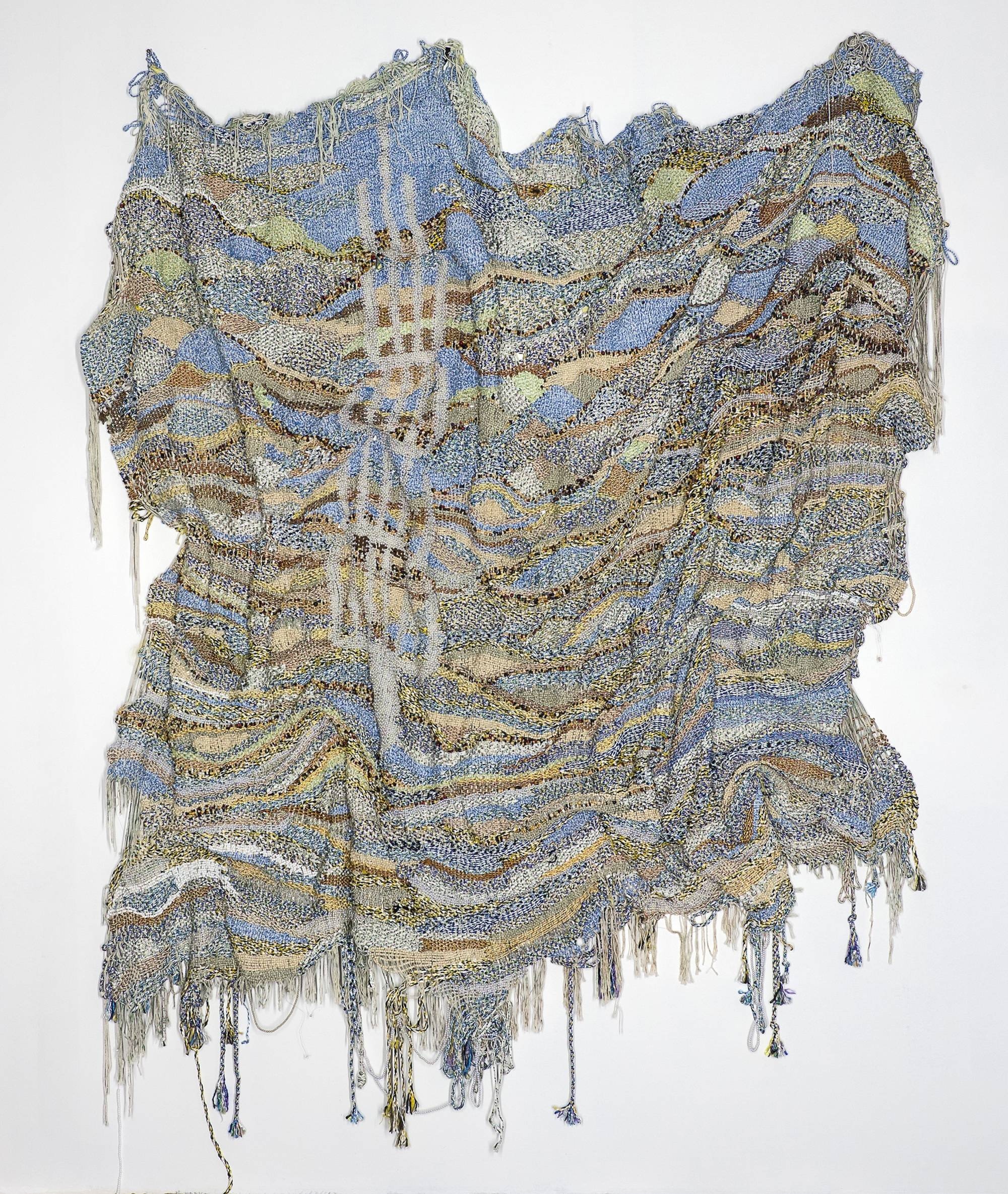Igshaan Adams

The Path of the Upright is named for a line in the first chapter of the Qur’an, a line to which Adams returns for guidance and solace. His is a mystical engagement with faith, one that lends itself to both abstraction and repetitive gesture as prayer. The work is made mainly from synthetic rope – the kind most often used for domestic washing lines. While its materials are humble, even banal, its composition is invested with a quiet, spiritual inquiry. The work's undulating form perhaps suggests that the Path of the Upright is not a way clearly laid, but rather faint or indistinct.
b.1982, Cape Town
Collected under the loose description of tapestry, Igshaan Adams’ woven works offer a haptic meditation on the changeability of being, which is never static but always reworked, stitched and unstitched. To the artist, the ritual repetition necessary to his medium presents itself as spiritual simile; each bead strung a material dhikr. Much like the ninety-nine names of Allah are chanted in Sufi practice, that they might wake the dormant divine within the speaker, so weaving too is an embodied commitment to slow accumulation and transformation. Bearing witness to life’s traces and traumas as inscribed in overlooked spaces – particularly those of Bonteheuwel, a low-income suburb on the Cape Flats where Adams was raised – the artist transcribes desire lines across fields and worn paths on linoleum floors, honouring the passages of time and people that shaped them. Adams’ work is marked by both a distinct, even sensual, pleasure in the tactile, and a lyrical invocation of the immaterial; the patina of the past distilled in objects of singular beauty and quiet dedication.